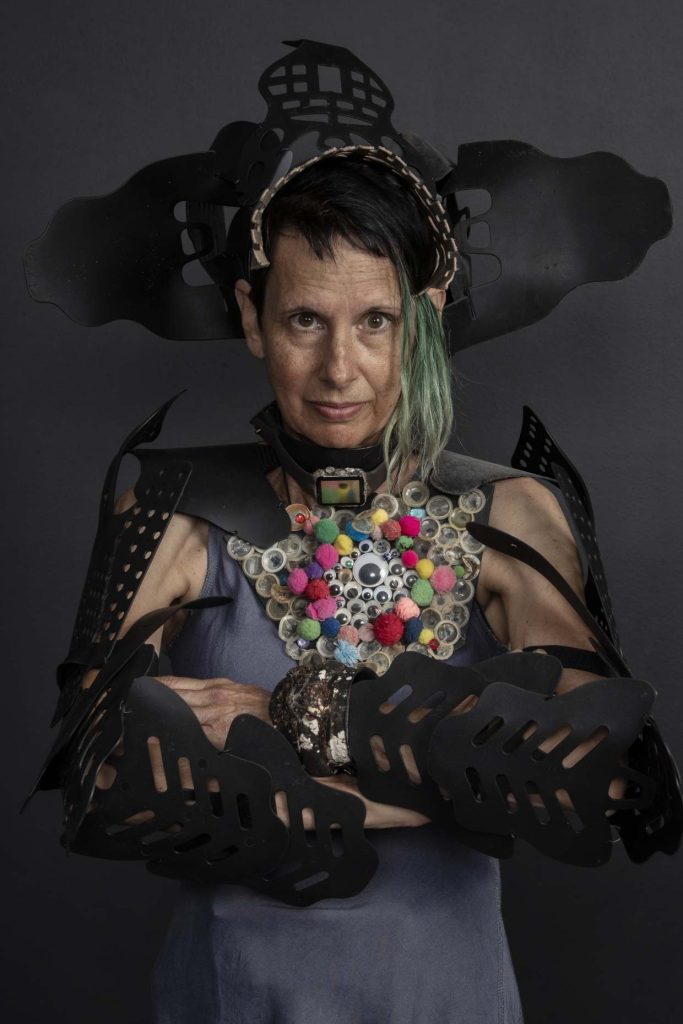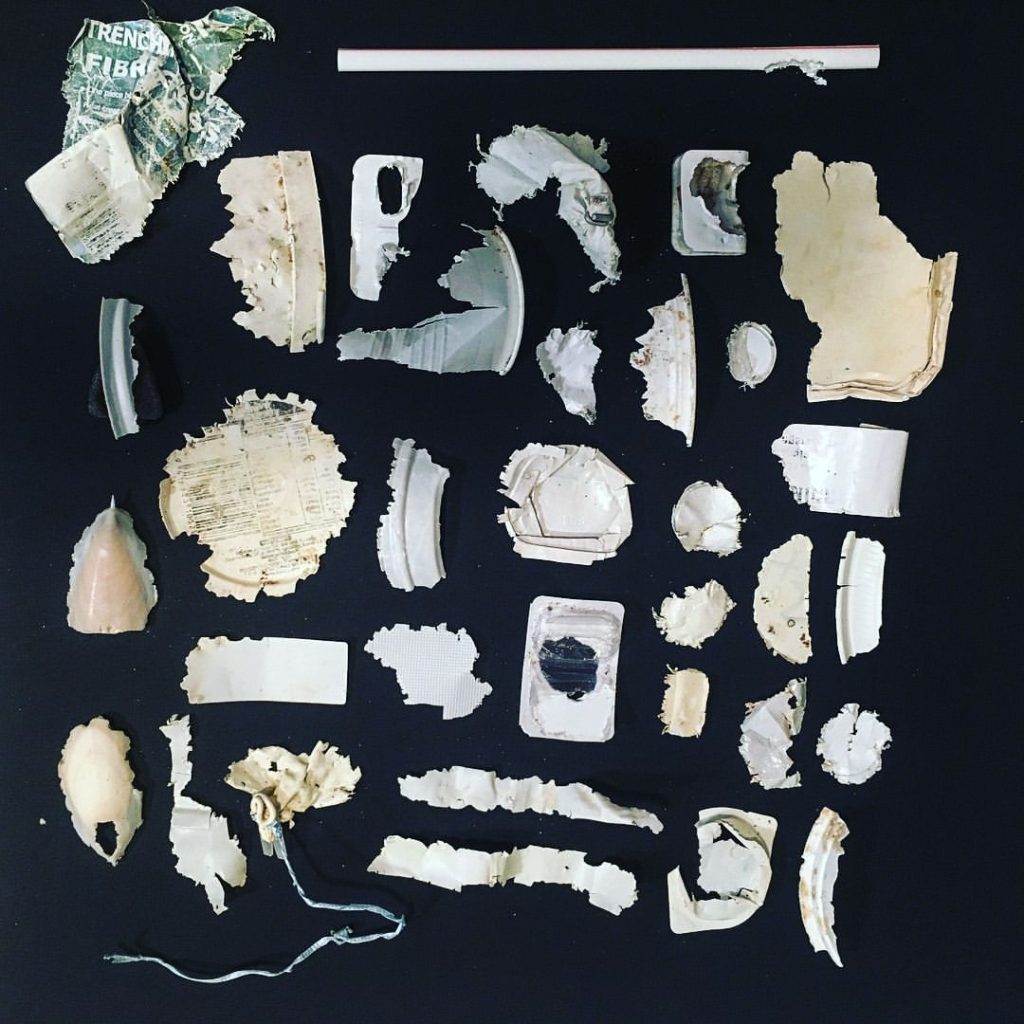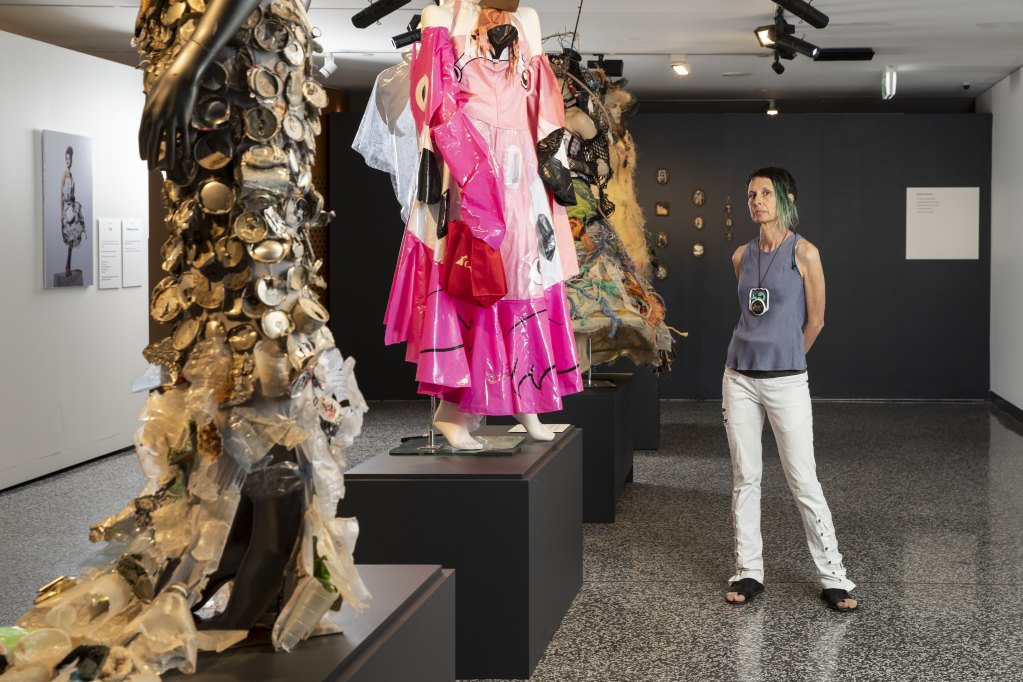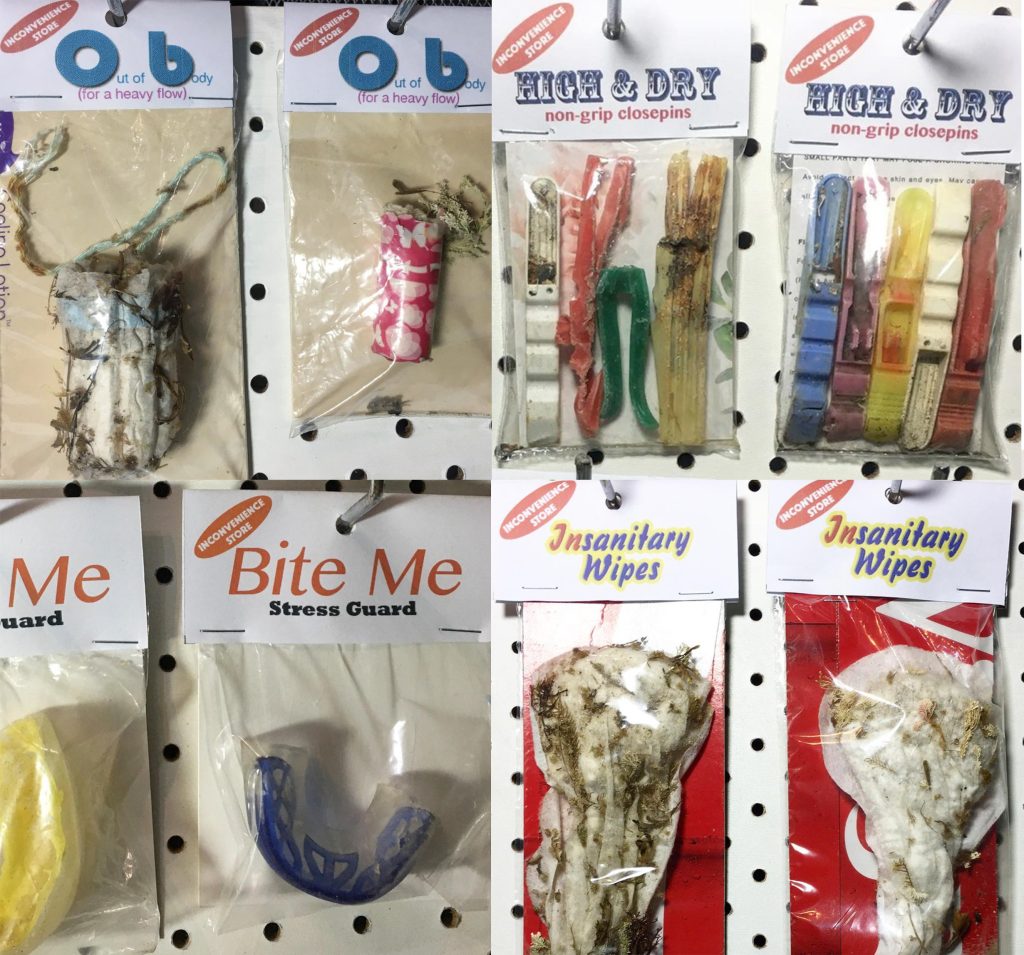Marina DeBris’s art borns from the need to shed light on the growing problem of ocean trash and wasteful (for the planet) and destructive human habits. To do this, she uses the debris abandoned by man, processed by the waters and returned to us on the shores of our seas in an artistic key; as if they were possessed by an evil spell and wanted to come back to haunt us.
In conjunction with the writing of the article, despite the cold wind whipping violently from the sea, I took a walk on the beach. The non-bathing sea has an irresistible charm: the stormy sky, the powerful waves, the seagulls on the beach. The scene would have been beautiful if I had not already noticed a considerable amount of colored objects on the shoreline at a certain distance: garbage. Plastic bottles, glass bottles, cans, juice bricks, polystyrene, various toys or parts of unidentified objects now in an advanced state of decay. Even a flask of wine floating in the river near the port, the current prevented the waters from flowing into the sea.
I often collect litter abandoned in nature, but that morning I was unprepared: I had nothing with me to be able to take it away and it was frustrating to just collect it and place it in a safe place, a construction site on the beach, where I knew they would not fly away. but they would then be recovered and thrown away.
I immediately went through the images of her works that I had viewed in the research phase in my mind and I thought about his methodical work of collection and cataloging with deep admiration. It was really an honor for me to be able to interview you.

(portrait of Louie Douvis)
How did your artistic career start?
I’ve been interested in art for as long as I can remember! My mother was a photographer and she often dragged us to museums when we were very young. Even if I didn’t like it back then, of course I fully enjoyed it in my adult life.
During my growth I used to make clothes, craft projects and I became particularly interested in metalworking during high school. I attended Indiana University to study with Alma Eikerman, who sadly she left shortly after my arrival. I took a Graphic Design course, and that has become my new passion. Then I was lucky enough to go to RISD (Rhode Island School of Design, An.), Where I also deepened my study. I then moved to New York right after art school and that was my career until recently when I was able to survive solely on my art.
How did you get the inspiration to turn garbage into art?
The inspiration came with my move from Bondi Beach, Australia to Venice Beach in California (USA). I instantly noticed all the rubbish settling on the beaches. I got involved with organizations for the defense of the ocean and started creating two-dimensional and three-dimensional pieces with what I found. It was 2009, and since then I have never stopped (and so has the waste stream unfortunately).

have some kind of bite marks
Do you think this ennobling of refusal has exclusively positive and illuminating effects or does it risk making the problem underestimate?
It is proven that art connects people, but in the case of such a serious and urgent problem, don’t you think there is a risk of focusing attention on the manufacturing aspect and leaving the message in the background?
Yes, it can definitely be problematic. Precisely for this reason I do not alter the materials and use objects that are obviously repulsive. For example, the “Feeding Frenzy” dress has a used sanitary pad or diaper for the top. It’s covered in algae from being in the ocean for so long. In the installation “The Inconvenience Store” (with the meaning of disadvantaged, An.) I have a box of cigarette butts, used tampons and sanitary pads, all sealed (among the packaging materials found).
I am concerned about the trend of “trashy fashion shows” where they simply “recycle” materials that would normally have been discarded or recycled, as the message should be about not using single-use items as much as possible.

I loved his definition of “frustrated fashion designer” because unfortunately this is the case: for those with a strong environmental awareness it is difficult to create something “new”, knowing the whole process of exploiting the resources that is upstream and the problems of downstream disposal.
What would you recommend to young artists who would like to embark on their path?
I advise all young (and old!) To follow their passion, especially when that passion is about a sustainable future. I think it is vital that we all use our talents (whatever they are) for the betterment of the animals (including the human animal) that share this planet.
It uses her findings exactly as they are found, in the way the water takes them to the shore (i.e. it does not wash them). Degradation, odor and dirt perfectly illustrate the seriousness of the problem. It is an aspect that I think is very significant in his creative process, which makes his work “alive”. Was this his method from the beginning?
Yes, the reason I never alter any of the materials is that the reality of the problem is obvious. I have never moved from this position and I hope the highlighting of how bad the trash is conveys it.
What è l’opera che ritiene più rappresentativa, a cui è più affezionata?
“The Inconvenience Store” è un’installazione che ho creato in 2017 that eats a minimarket, only che tutta la “merce” è stata raccolta along the spiaggia and riconfezionata in materiali trovati. He has won 3 awards, bringing the Peoples Choice to the Sydney Sculpture By the Sea.

The Inconvenience Store, Bondi 2017
If she weren’t an artist, what would she do? How would you have declined your commitment to the environment?
I trained as a graphic designer but got involved in social justice issues before the ocean issue, albeit only to a small extent through protests. One of my first works was The Trucker Boy, an ironic joke, but at the same time a serious commentary on sexism.
To follow Marina DeBris and her creations from waste:
Instagram: https://www.instagram.com/marinadebris/
Website: http://washedup.us/
You might also be interested in: “Sayaka Ganz: impressionismo 3D”





